One often plans a lot while buying a home. Investing your entire savings into your dream home! But some tiny creatures can cause huge damage to the structures freaking you out.
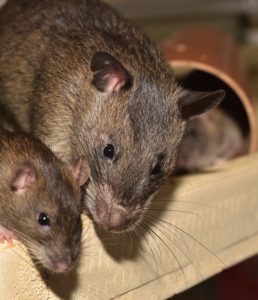 Have you experienced strange rustlings in the night? A number of people are waking to the frightening sound of rats and mice scratching around their homes.
Have you experienced strange rustlings in the night? A number of people are waking to the frightening sound of rats and mice scratching around their homes.
At this time of year, when cold weather forces rats and mice indoors to nest and hunt for food, infestations can multiple, with rodents spreading disease as well as causing damage by chewing through wiring, pipes and brickwork.
They’re dirty. They bite. They are carriers of diseases, bacteria and parasites. They infest human spaces, cause damage, contaminate food, set up home where they’re not wanted (everywhere) and businesses are forced to spend money on robust pest control measures to keep their numbers under control.
Latest news reported is as follows:
These are the rodents trying to get into your home this fall
by Julia Bayly October 1, 2020
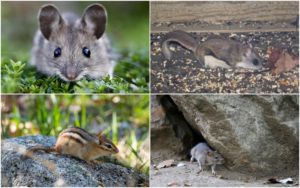
Mice, flying squirrels, chipmunks and rats are rodent visitors you might find in your Maine home this season. Credit: Composite photo
When temperatures start to cool in the fall that’s the time some of Maine’s most common rodents start looking for places to overwinter. And for a rodent looking to get in out of the cold, your house is every bit as attractive as a den in an old tree or under a rock pile. Maybe even moreso.
RAT ATTACK
Super rats up to 20 inches long are invading British homes via toilets and drainpipes – is YOUR house at risk?
- Dan Hall
- 15 October 2019
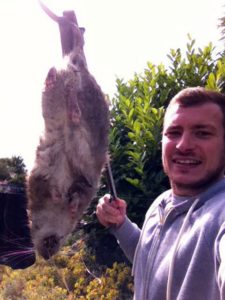
THEY say you’re never more than six feet away from a rat — but if you have plastic drainpipes in your home, you’re probably even closer.
Pest controllers are warning that millions of super-size disease-ridden rodents are scurrying into houses after gnawing through plastic drainpipes as temperatures plummet.
While traditionally drainpipes were made from cast iron, most modern drainpipes are plastic and pest control experts are warning that rats with razor sharp teeth can chew through them.
Although they normally live underground, rats go in search of food and warmth at this time of year – and houses across the UK are at risk of invasion as we face the coldest winter in 30 years.
Massive increase in rats this year
Peter Higgs, who runs PGH Pest Control in Surrey, says he’s seen a massive increases in the numbers of rats he’s found inside UK homes over the past few weeks – and says they can get into houses via holes as small as half an inch.
Horrifyingly, they can also get in through toilets via the sewage system – though this is rare.
“British homes are the perfect hunting ground for rats and we’ve noticed a massive, massive increase in the amount of them,” he tells us.
“Most carry Weil’s disease – which can be deadly to humans, so it’s very important to protect your home by cramming holes with filler and wire brushes where possible.
Similar news was reported in the year 2018.
UK rat INVASION: 120 million rodents heading straight for Brit HOMES this winter
BRITAIN’S 120million-strong rat population is on the move and heading straight for our homes.
By Robin Cottle │Daily Star │ October 6, 2018
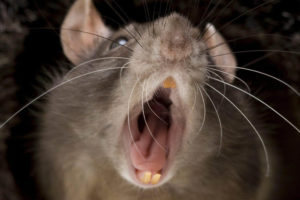 GNAW BLIMEY: Rats are seeking shelter from the cold in people’s homes
GNAW BLIMEY: Rats are seeking shelter from the cold in people’s homes
The disease-ridden vermin are seeking shelter as the cold winter months set in.
Pest control boss Paul Bates says the critters are on the hunt for somewhere “warm and cosy” to build nests.
Call-outs are set to rise by 40% in coming weeks.
The rodent invasion is set to cause millions of pounds worth of damage as they spark fires by gnawing through electric cables and beams.
A “double whammy” of conditions caused by the recent heatwave made rats even more likely to head for our homes, said Paul, of Cleankill Pest Control.
He claimed the scorching heat caused more of them to come out of hiding looking for water.
The expert warned Brits to “act now” and shore up homes as a blast of Arctic air threatens to send temperatures plummeting.
A Cleankill spokesman said: “At a time when we feel like bolting our doors and keeping the cold out, it’s not surprising mice and rats try to join us.”
Since these rodents are very common most of the people tend to get rid of them by using do it yourself methods like spray, traps, chemicals, ultrasonic repellers, etc. but are they really effective and harmless to humans? Moreover, you can see that the number of rodents invading our homes is increasing each year.
Mechanical traps stop working once a mechanical error occurs. The ultrasonic repeller works only when you have a power supply nearby. The commonly used pest repellents contain diethyltoluamide which is harmful to humans and pests. Glue boards and rat baits are more dangerous because there are cases where people have accidentally stuck to them.
So what can be a novel approach towards these rodent infestations?
We, at C Tech Corporation, manufacture a range of extremely low toxicity, extremely low hazard, and environment-friendly pest repellent products.
Our products are a blend of green chemistry and smart technology.
Our product Rodrepel™ is an extremely low toxic, low hazard rodent aversive. This product acts through a series of a highly developed intricate mechanism ensuring that rodents are kept away from the target application. Our eco-friendly products do not kill the target species but only repel them.
The product triggers a fear response in rodents thus protecting the application. It causes severe temporary distress to the mucous membrane of the rodents due to which the pest stays away from the application. The product triggers an unpleasant reaction in case if the pest tries to gnaw away the application. After encountering the above-mentioned emotions, the animal instinctively perceives it as something it should stay away from and stores this information for future reference. The fact that certain rodents are repelled is mimicked by other rodents as well. Thus, the other rodents too stay away from the applications. The unpleasant experience is imprinted within the animal’s memory and passed on to its progeny.
The products are available in the form of a solid masterbatch, liquid concentrate, lacquer, and wood polish additive.
The products are available in the form of a solid masterbatch, liquid concentrate, lacquer, and wood polish additive.
The product available in the form of solid masterbatch can be incorporated into polymeric applications like wires and cables, pipes, etc. Thereby making the end application rodent resistant.
The product available in the form of liquid concentrate can be diluted in paints and can be applied over the interior and exterior of the house, garages, etc. The liquid concentrate is compatible with all kinds of paints and solvents.
The already installed cables, pipes, and other applications can be coated with our lacquer to protect them from the rodents gnawing on this application and thus preventing the damage. The lacquer is a transparent product and it does not wear off easily.
The wood polish additive can be blended with wood polish and applied on the wooden articles and furniture.
Our newly developed product is in the form of a spray which is easy to use product. It can be sprayed on the infested area to repel the rodents and prevent them from entering the premises.
By using our products, you can get an effective and long-lasting solution against rodent nuisance.
Contact us at technical.marketing@ctechcorporation.com if you’re facing problems with rodents and get the best remedies to combat the pest menace.
Also, visit our websites:
1] http://www.ctechcorporation.com/
2] http://www.rodrepel.com/
3] http://www.termirepel.com/
4] http://www.combirepel.com/
Follow our Facebook pages at:
1] https://www.facebook.com/Combirepel-411710912249274/
2] https://www.facebook.com/Termirepel-104225413091251/
3] https://www.facebook.com/Rodrepel-120734974768048/
Follow us on our Twitter pages at:
1] https://twitter.com/rodrepel
2] https://twitter.com/termirepel
3] https://twitter.com/combirepel

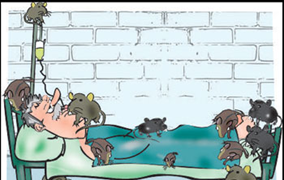 They get attracted to the food available in the hospital canteens. Caretakers of patients carry food along with them in the hospitals. Many times the carried food is dropped on the flooring. The pest easily gets attracted to these sources of food.
They get attracted to the food available in the hospital canteens. Caretakers of patients carry food along with them in the hospitals. Many times the carried food is dropped on the flooring. The pest easily gets attracted to these sources of food.





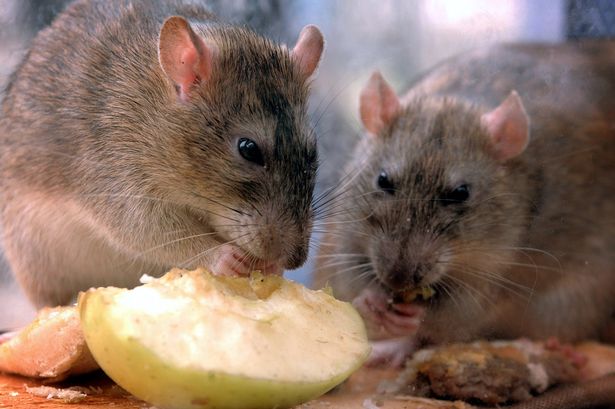
 Rodents use their sense of smell to find food. Though herbivorous, they can eat a wide variety of stuff. They eat fruits, vegetables, cereal grains; scavenge for scraps left by a larger predator. Supermarkets provide with a wide variety of food and household products. The main purpose of rodents entering the supermarkets is the food availability there. Here they find a variety of foodstuff to munch, along with a safe place to nest.
Rodents use their sense of smell to find food. Though herbivorous, they can eat a wide variety of stuff. They eat fruits, vegetables, cereal grains; scavenge for scraps left by a larger predator. Supermarkets provide with a wide variety of food and household products. The main purpose of rodents entering the supermarkets is the food availability there. Here they find a variety of foodstuff to munch, along with a safe place to nest.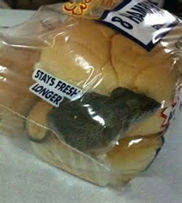 Rodents that seem very big can slide in like a jelly into the tightest of gaps and holes. They can enter supermarkets in many ways like roof joints, electrical cable entry holes, AC chases etc.
Rodents that seem very big can slide in like a jelly into the tightest of gaps and holes. They can enter supermarkets in many ways like roof joints, electrical cable entry holes, AC chases etc. Grains are stored in a lot at supermarkets. These grains become a great treat for the rodents, and insects as well. Grains are mainly stored in burlap or plastic bags, metal or plastic container. Rodents are capable of chewing burlap bags easily, but if given enough time they can chew metal and plastic cans as well.
Grains are stored in a lot at supermarkets. These grains become a great treat for the rodents, and insects as well. Grains are mainly stored in burlap or plastic bags, metal or plastic container. Rodents are capable of chewing burlap bags easily, but if given enough time they can chew metal and plastic cans as well.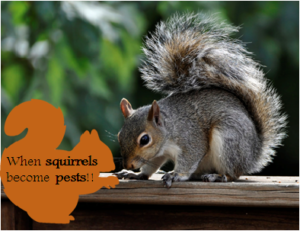 Squirrels of the order ‘Rodentia’ have 200 species and are categorized into three types: ground squirrel, tree squirrel and flying squirrel. Squirrels can be cute and amusing to watch in their natural environment. However, when they invade residential homes, destroy landscaping, eat vegetation, or scare away desirable birds, their antics quickly become less entertaining or cute. They are arboreal in nature. That means they live in trees. But they often choose to live in attics, chimneys, garage, vents etc. Any place that people live we also find them.
Squirrels of the order ‘Rodentia’ have 200 species and are categorized into three types: ground squirrel, tree squirrel and flying squirrel. Squirrels can be cute and amusing to watch in their natural environment. However, when they invade residential homes, destroy landscaping, eat vegetation, or scare away desirable birds, their antics quickly become less entertaining or cute. They are arboreal in nature. That means they live in trees. But they often choose to live in attics, chimneys, garage, vents etc. Any place that people live we also find them. PORTLAND (WGME) – Central Maine Power is reporting that squirrels are causing a rash of power outages in southern and central Maine.
PORTLAND (WGME) – Central Maine Power is reporting that squirrels are causing a rash of power outages in southern and central Maine.
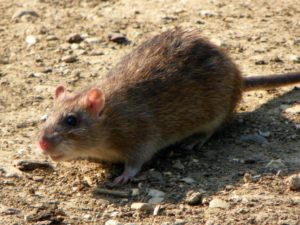 The Norway rat, roof rat, and house mouse are destructive rodent pests in and around farm facilities. This can be especially true during the winter months, as they seek food and refuge indoors. Rats and mice consume and contaminate food, gnaw on structural, mechanical, and electrical components, and weaken concrete slabs and walkways with their burrowing activities. They can also potentially carry diseases such as bubonic plague, leptospirosis, rabies, and bacterial food poisoning.
The Norway rat, roof rat, and house mouse are destructive rodent pests in and around farm facilities. This can be especially true during the winter months, as they seek food and refuge indoors. Rats and mice consume and contaminate food, gnaw on structural, mechanical, and electrical components, and weaken concrete slabs and walkways with their burrowing activities. They can also potentially carry diseases such as bubonic plague, leptospirosis, rabies, and bacterial food poisoning.